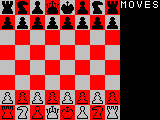
How and why do you make these games?
1. At the very beginning
Since I was 4, as you may have read in my history [section 1], I've been playing video games. By second grade, often, if I did not do well in school, I couldn't play my video games, so I had to develop another way to do so. This was the birth of making new games that aren't computer-based [though partly, but no computers required [maybe a calcuator and the brain of course :)]]
Since I love messing with numbers, it's quite likely that the first games I made were calculator games where I add or subtract some numbers continuously. [pressing 123 the + sign then the = sign repeatedly [this makes the calculator count by the number you want, however, some calculators need some extra commands before doing this, including scientific calucaltors].
Because my family often rejects playing board games, and stuff because they're often too involved with something, the first basic games were from these board games. I devised a way to play most every two-player based games with only yourself! Games based on probability, especially those using dice [even if pawns or cards are involved] are easy, but more complex ones, like UNO, are harder.
2. My first game
By around 4th to 6th grade, I've been having a hard time going to bed at a regular schedule [though, then, my day-night cycles were far better than what they are today]. Before, I was sent to bed by my parents at around 9:00 to 10:00 PM, depending whether it was a weekday or weekend that was to be the next day. Because it took often 2 or more hours to actually get to sleep, I had to find a way to "wear myself down" enough to get sleepy enough. This was the era in which playing these games was far more active, however, it wasn't creating new games, it was playing old games repeatedly. First, it was with small, toy cars [you can buy a pack of 25 of these for like $8 or so, $8 is just a guess as it's been years since I've last seen one.]. I have a game of this relating to a battle [where you make a car, by player's turn smash into another and try to flip it over].
These toy cars led to about 2 years of playing with my sister almost entirely in peace. We've made some stories from this almost always with a restaurant involved, a "fake" restaurant about 2.3 square feet or so and less than a foot high. Ever since she stopped with this, I've disliked her since. Instead, I've made the car battle game to lure her back. It only lasted a short time. Since then, I've had to develop ways to play these games alone.
3. Game creation goes wild
This was the breakthrough I needed for ultimate game creation. As time went on, I've found ways to make all kinds of games, some of which are boring, and some of which are fun. The ones I feel that are above the good mark [or equal to it] are displayed on my site. Marbles: Lights out, for example, required all things I've already got: a light-bright box [light inside not needed], light-bright lights, and tons of marbles. Upon having these three basics, I've created this game. For the detailed history on this game, refer to it from the list of games on the games index. Hit-a-bump was thought of well before much of anything else. Perhaps, Hit-a-bump is my first game I created that can be played solo. It's been improved the most among any game I've got, more than twice that of the next most improved! Hit-a-bump has six versions, five of which you can play! The details are in the game's specifics.
4. Math games
Outside these games are math games. I've always loved taking two numbers and giving them an operation of some sort to get something else seemingly out of random. This concept called for many games. One of which is factors. This game is where you try to find the largest prime numbers you can, the larger, the bigger your score [which involves a lot of adding and squaring]! Another one is called "Gazintas". This game deals with multiplying or dividing fractions, depending on your predetermined mode. The most recent of these math games is Ten, a counting game. All of these games' histories are found in the appropriate links on the games index page.
5. The future: computerized
The future of my game developing is both of a less active and more complex one. I've now got the software to actually make a game of my own, a real 3D computer game, more than I originally bargained for! The downfalls are long and heavy. First, I don't know computer programming and learning it would be very tough knowing my high rate of forgetting. However, I do have some fundamentals. Second, the time frames, ignoring the programming, is over 7 years! That's 7 years just to build the huge maps I've always dreamed of. Planning for both the programming and the main design and layout is practically already done! Refer to my mind game's concepts* for the full details. If I'm lucky with that game, and that I'd have the basics already done, I could probably make another game in about 4 more years.
Footnotes:
* My mind game's general concepts on how it runs and plays are explained very well here.






